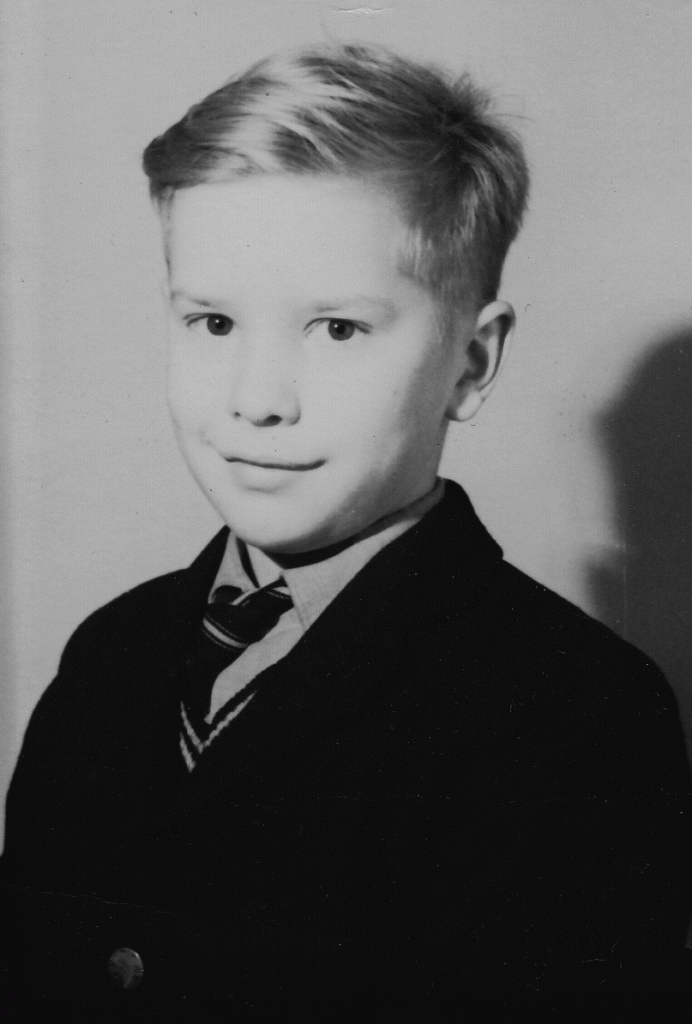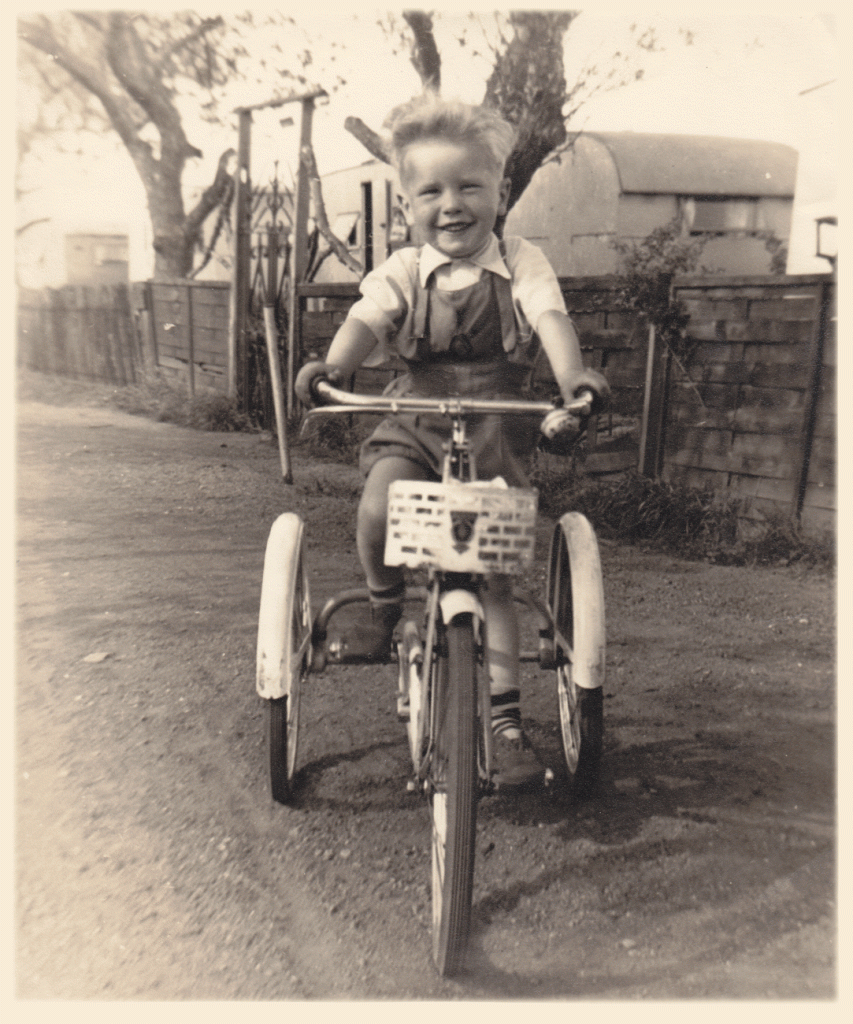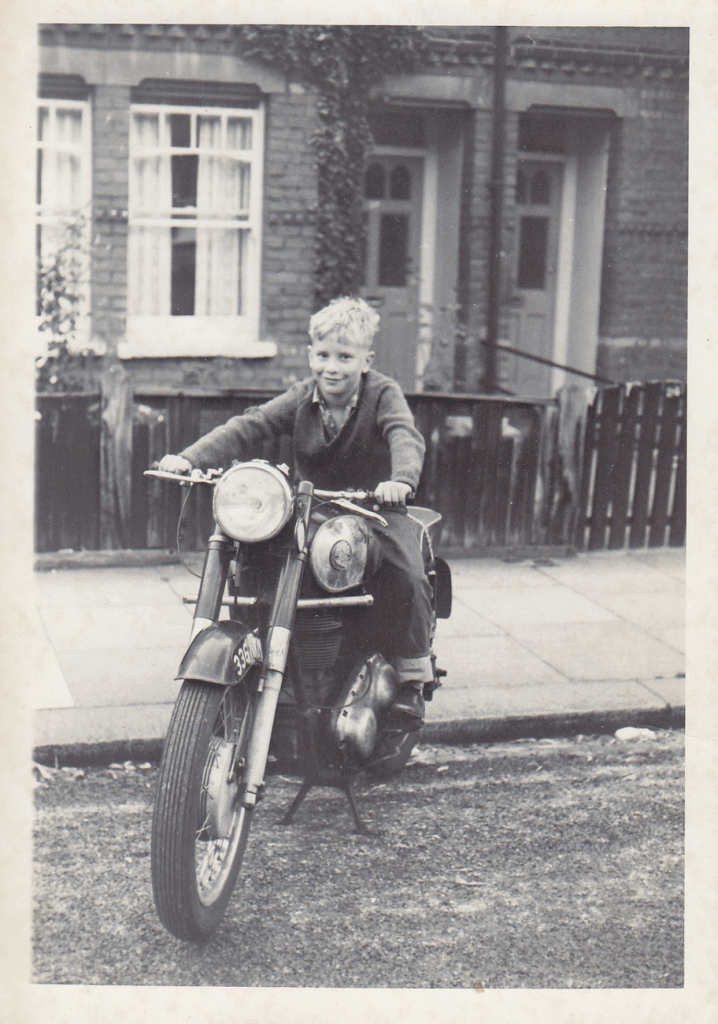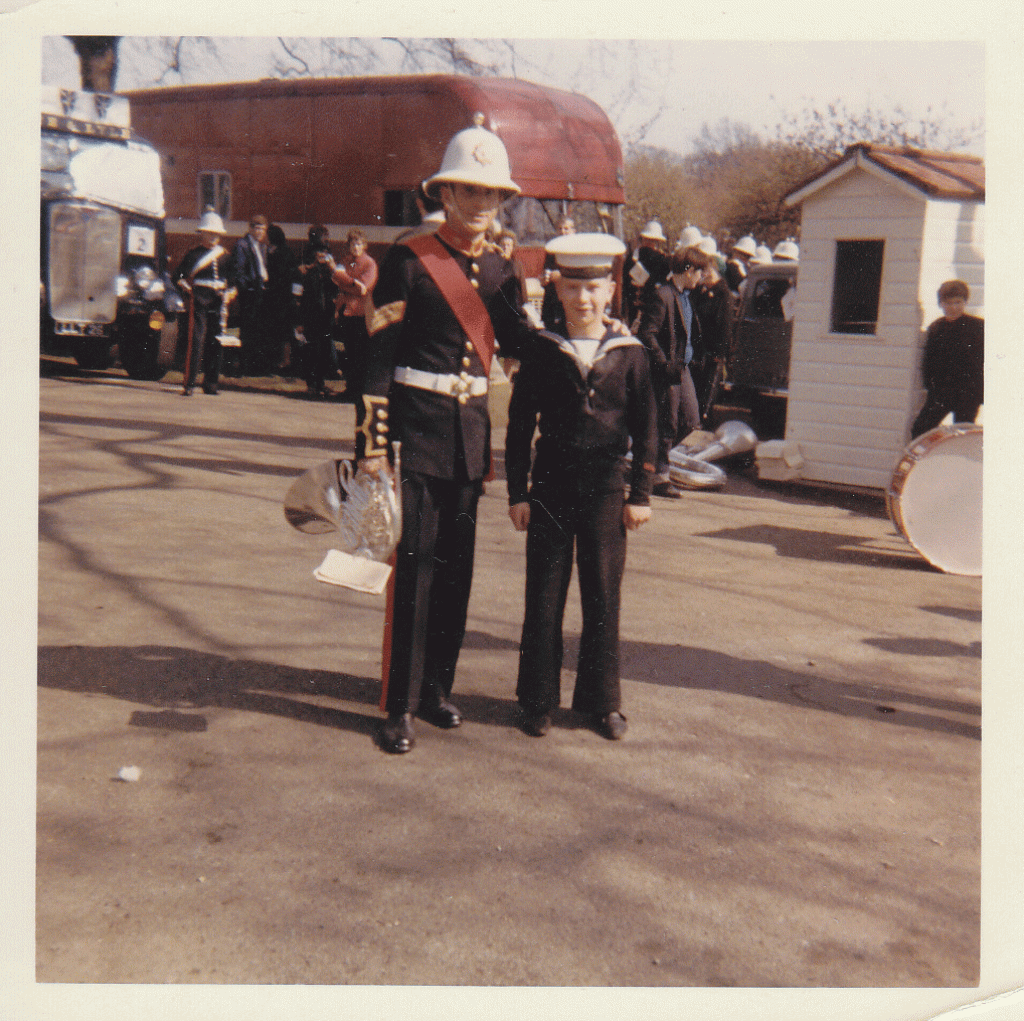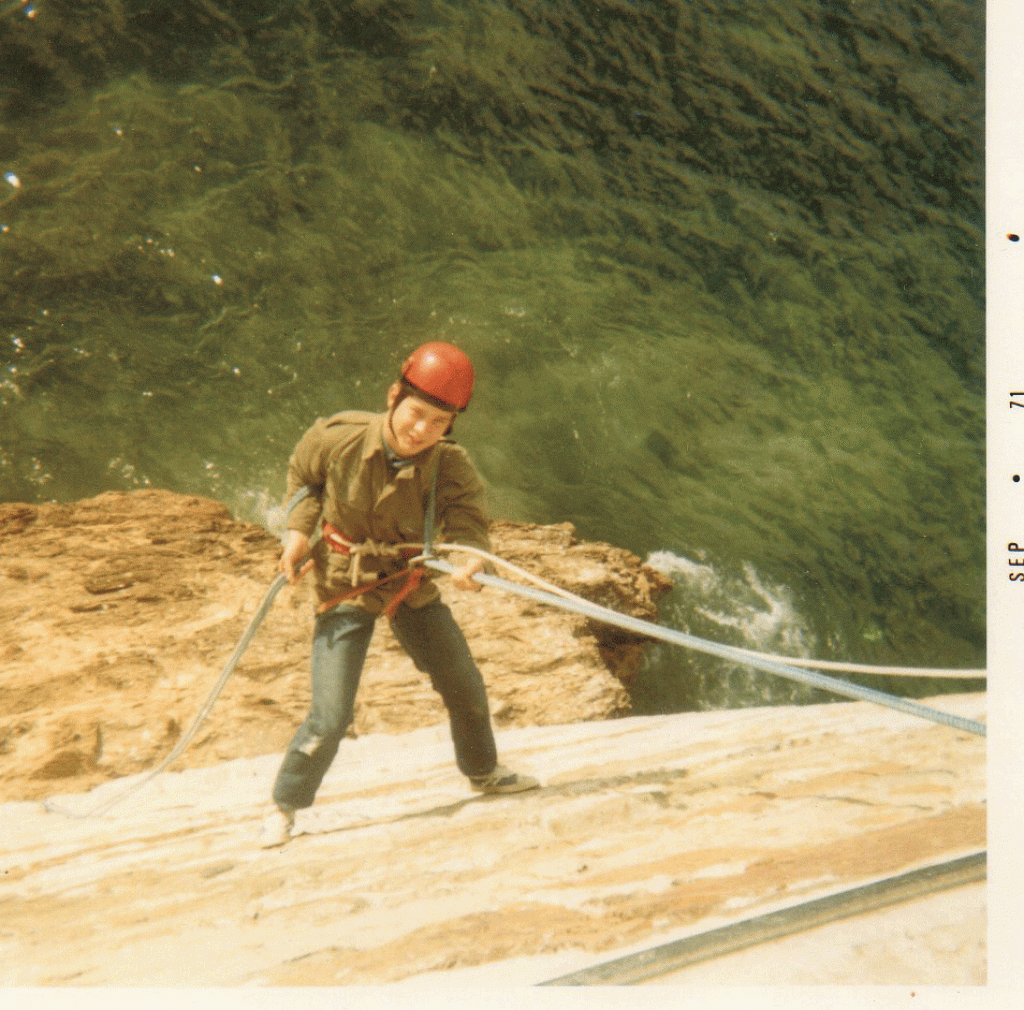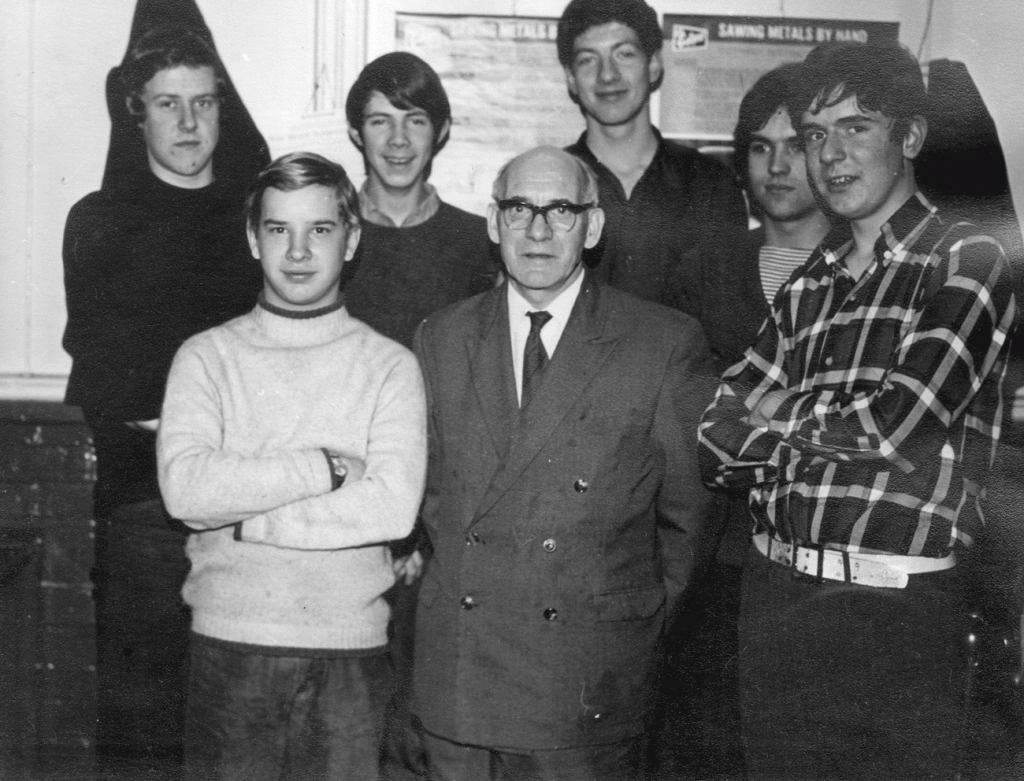
Terrence Stone, BCAv, retired Engineer and Sea Cadet
I was born in 1952, in Chiswick Hospital, Middlesex. My early years were spent in Shepperton, living in a caravan with my parents and sister Teresa, who is 3 years older. We weren’t travellers; we lived in a caravan on a proper caravan site. It was small and basic, with a little garden where my father had an aviary and bred budgerigars. The story goes my mother was washing me one day and sat me on the work top in the very small kitchen. I kept wriggling and she told me off until she realised, she’d placed me on top of the cooker, although it was off it was still warm – no wonder I couldn’t keep still.
My father worked as a baker’s delivery man locally. Opposite the caravan site there was a nursery where my mum worked on occasions, pruning and potting up plants. I remember accompanying her and sitting in the greenhouse eating our lunchtime sandwiches.
When I was 8 we moved from the caravan to a flat above a Bakers shop in Thames Ditton, which we acquired as part of my dad’s job. It felt huge by comparison with 2 bedrooms, kitchen/dining room, bathroom and lounge. From there we moved when I was about 11, to our first house, which was not far from Chessington Zoo.
I don’t have vivid memories of my school life, though my childhood was a happy one. I had various interests and did a bit of everything. I suppose I was just ticking over really with no idea of what to aspire to.
It was my dad who suggested I join the Sea Cadets as he used to be a Sea Cadet himself, leaving just before my birth. His brother was in the Royal Marines as a musician and played the French horn. He went on to be their director of music before he retired from the service. They inspired me to get involved with Sea Cadets and I joined in 1963. The unit name was T.S. Steadfast, located in Kingston, beside the Thames (T.S. stands for Training Ship).
My uncle was living in naval quarters and was first stationed in Portsmouth and then Deal, Kent. As a family we would visit him and his family. I remember a time on Deal beach when me and my cousin were in the shallows not realising the seabed sloped down suddenly, as it was a pebble beach. My parents were relaxing on the beach. Unfortunately, I couldn’t swim then and I suddenly slipped and went under the water. I dipped and dived and was about to go under for a third time when my Dad rushed forward and pulled me out by my hair. Good job he did otherwise I wouldn’t be writing this! They made me rest on the beach and a lady came up to my mum and asked if she wanted some brandy. My mum said, “I can’t give him that.” and the lady said, “No this is for you!”
When I joined the Sea Cadets, I was probably the smallest cadet they’d had. They provided a uniform and the navy-blue trousers in those days had 7 horizontal creases in them, the 7 creases representing the 7 seas. But I was so short my uniform had to be adapted and could only have 5 creases.
As a cadet, as well as the many activities available to participate in, they also taught team work, leadership, helping others, as well as instilling self-belief and confidence. I firmly believe the training I received as a cadet taught me lessons that set me on course for later life, not just within the sea cadets but also in my working career as a design engineer, my full-time job.
I took part in as many activities as possible and there were times, I was at the unit 5 nights a week and some Saturdays, plus the Sunday morning parade. Tuesdays and Thursdays were the official training nights where we learnt seamanship, rowing, sailing, canoeing, power boating, navigation, drill, adventure training etc. and Sundays was generally a full uniform inspection parade.
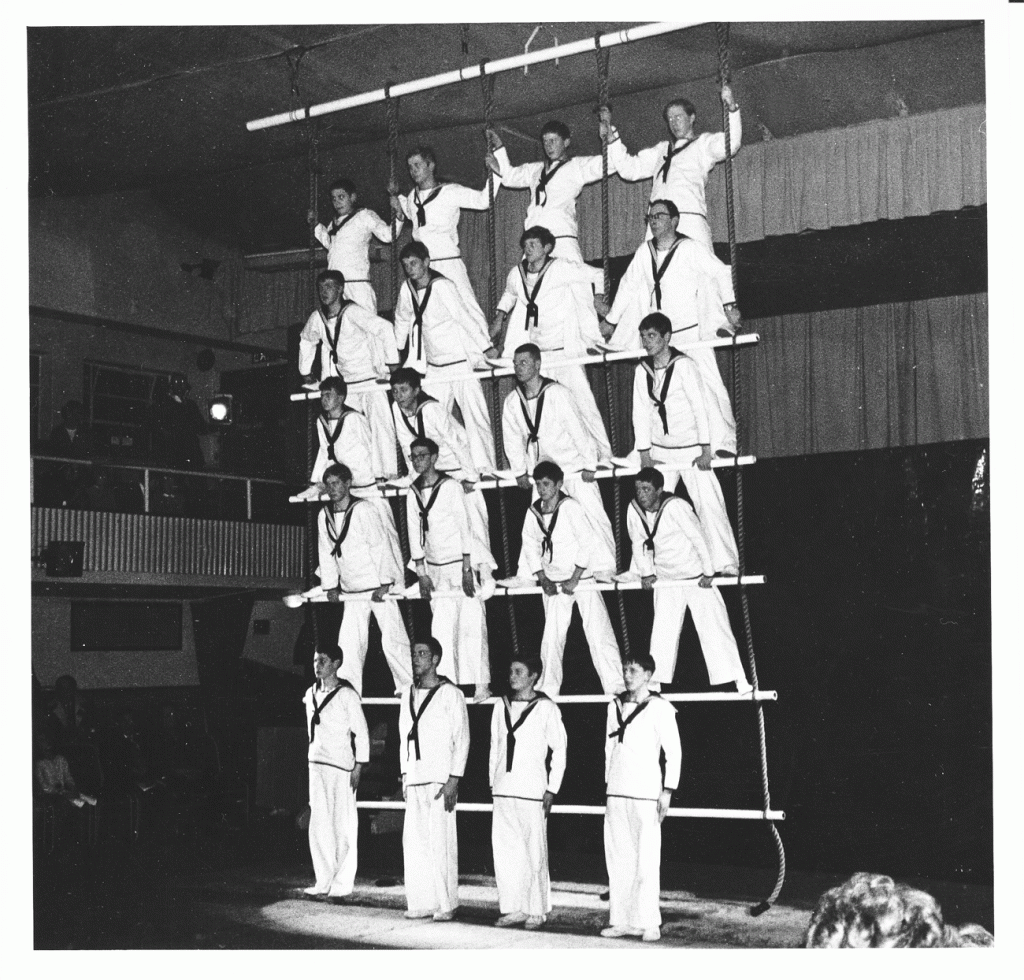
On the other nights there was shooting (indoor rifle range), Physical Training, swimming lessons at the local baths, band practice or preparing for weekends for things such as camping or trips up river for the weekend.
Even if there wasn’t anything in particular to do on the non-training nights, it was good to have somewhere to go to meet your friends, the unit was always open.
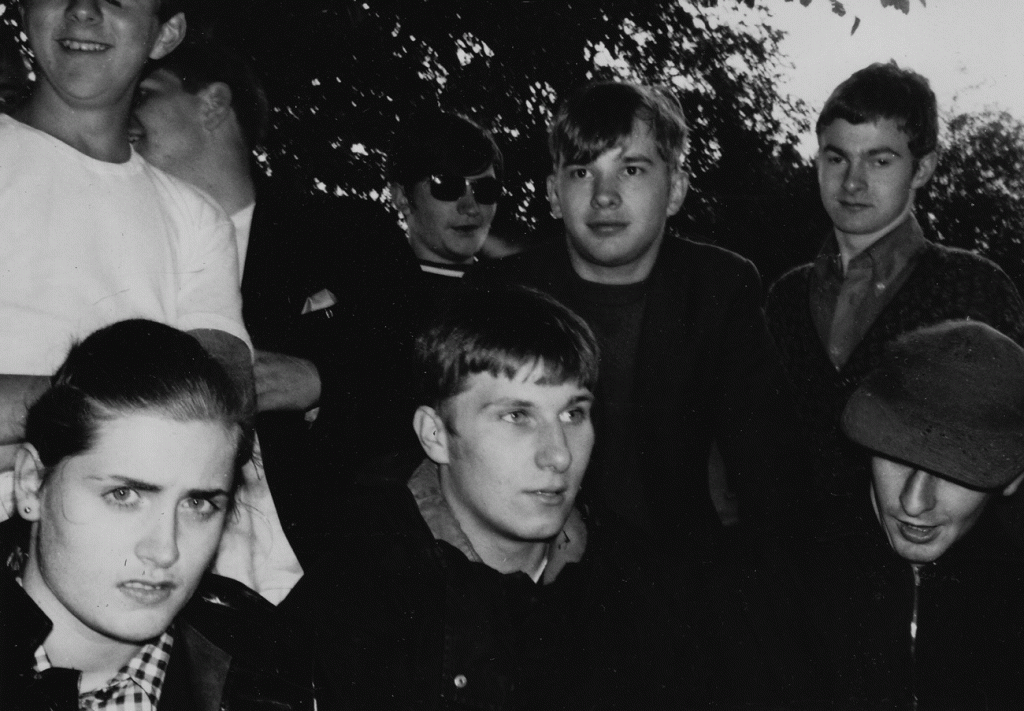
Each year the unit would put on a ‘Tournament’ for 3 nights in April (based on the Royal Tournament format that used to be held at Earls Court). Kingston town had two swimming baths and during the winter, one was boarded over to allow for events, dances etc and Steadfast used to hire it for the tournament. We would put on various displays based on naval themes such as band and drill displays, PT, etc. This all had to be rehearsed for about 8 weeks leading up to the show. Team work was certainly a key factor in preparing for this and it also raised money for the unit.
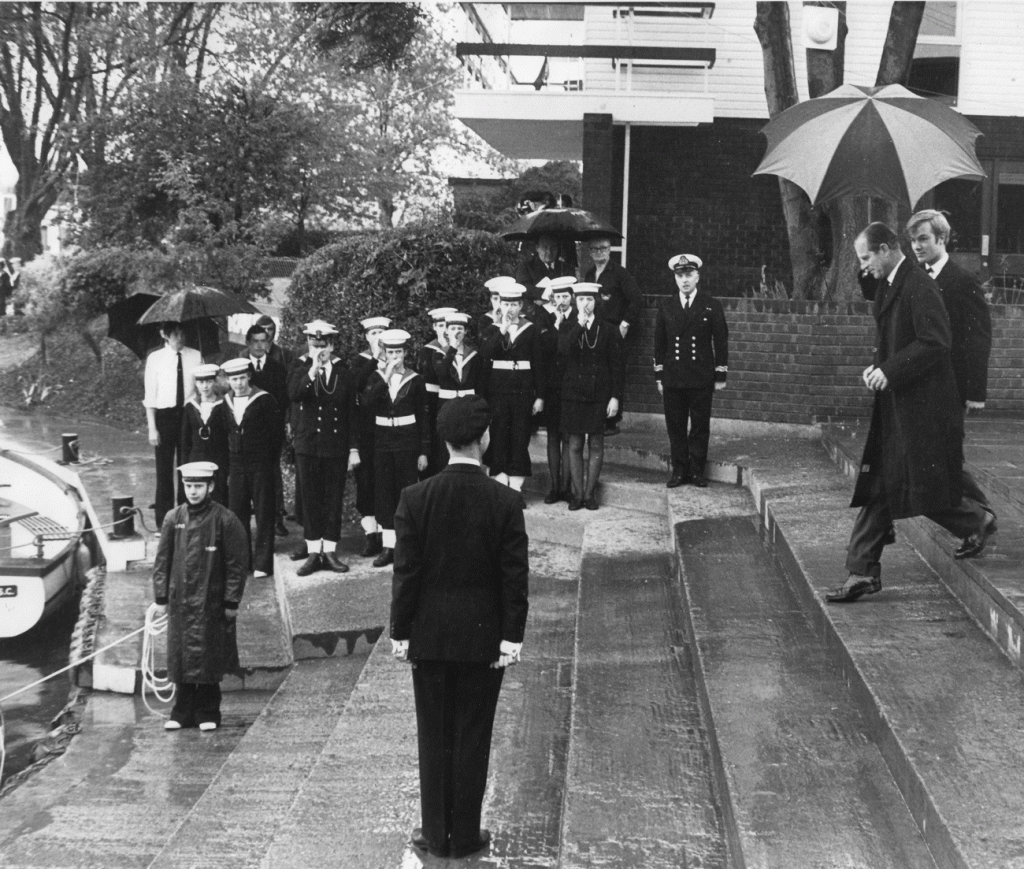
We were also taken on trips and camps. One of my first trips abroad was to Jersey – with 99 other cadets. HMS Salisbury happened to be doing a return trip from Portsmouth to Jersey at just the right time to coincide with our trip. Unfortunately, there was a force 9 gale all the way there so you can imagine quite a few of us didn’t feel very well, myself included and even some of the crew. But they looked after us by cleaning and pressing our uniforms so by the time we got to Jersey we were all smart again.
We enjoyed a week’s camping in the old fort at St Helier. Fortunately, the sea was like a mill pond as we sailed home. The unit band was playing on the stern and we lay there lapping up the sun. What a contrast.
At the age of 18 you’re classed as an adult and there’s no provision to remain as a cadet. Often cadets left at this stage but for others there was a natural progression to become a member of staff. I began as an Instructor and then worked my way through the ranks reaching Lieutenant (SCC) RNR.
As a staff member, although teaching the younger cadets, you’re still learning and I find even after all these years, there are still things to learn. Youth organisations have to adapt and change to suit new regulations, safety awareness and changes in society and that’s all part of what we pass on to the young people of today.
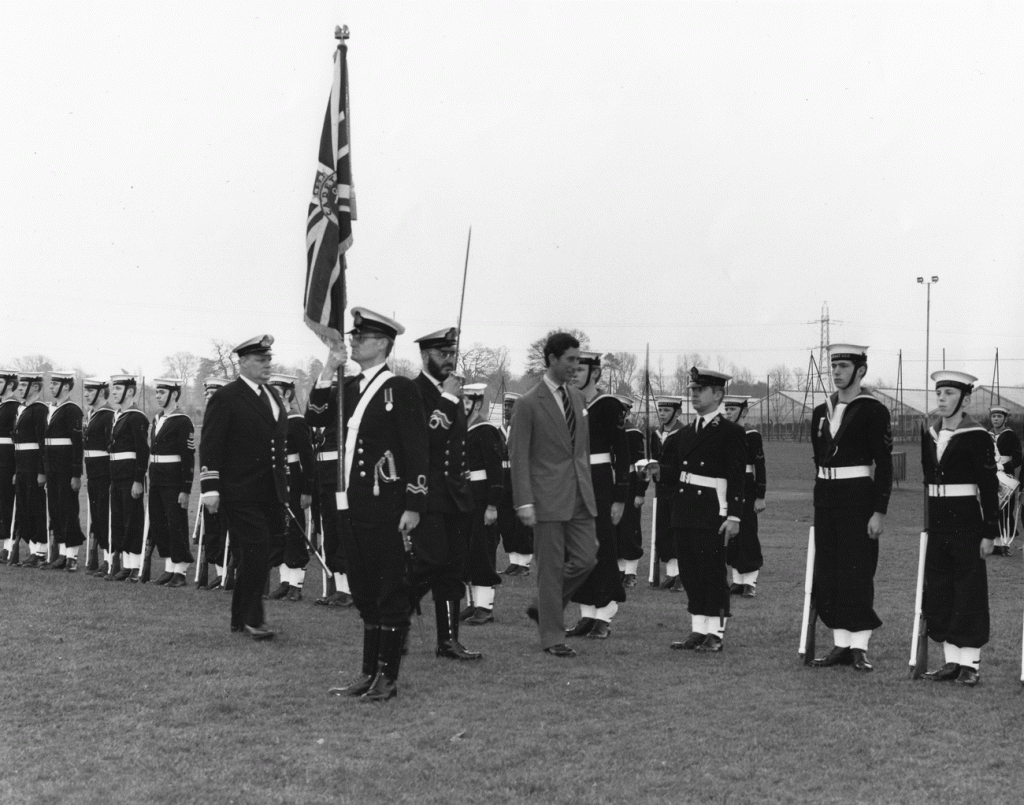
I remember taking a group of cadets for their promotion board to Leading Cadet. There was one lad in particular who passed but wasn’t the top grade. He stayed on another year and then left the cadets, unsure what he was going to do. He is now a Lieutenant Commander in the Royal Navy. A highly respected Navigation Officer and not long returned from a 6-month overseas duty. Despite still being in the Navy he’s also the commanding officer of a Sea Cadet unit, passing his knowledge and skills onto others and has always said the training he received in the cadets has helped him achieve the position he has now.
There are 4 Districts that form the London area and Kingston is in the Western District of which there are 10 other units. Every year there are District competitions like drill, rowing, athletics, adventure training, swimming, canoeing and football. The winners from each competition go onto the Area competition and finally the National competition. During my long spell at Kingston, we were the first unit to win the Canada Trophy (best unit in UK), 4 years in a row.
I moved to Cranleigh some 35 years ago with my wife and although there was a Sea Cadet unit in Guildford, my heart was always with Western District that I come from. My role for the past 15 years has been Assistant District Officer. There are 11 units in the Western district, hence the amount of traveling I’ve undertaken to the various units, activities and competitions over the years.
Originally the Sea Cadets was set up for boys. The Girls Nautical Training Corps (GNTC) was set up for girls in 1942 and Kingston unit was one of the first units to include girls into the Sea Cadets. It’s all changed now so there is no difference, there’s no GNTC, it’s all Sea Cadets, just the same as in the Navy.
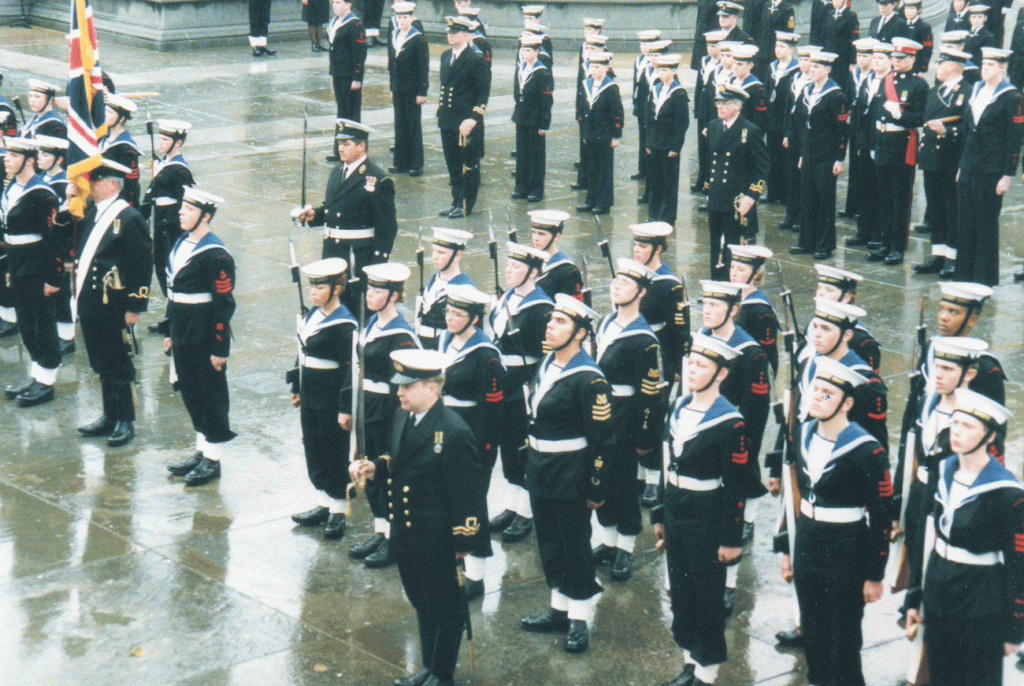
I was one of the first of my friends to get a car in 1969 (a Morris minor van) and I used to get tapped up to transport some of the other senior cadets around. On Sunday mornings, I would pick up my best mate Stuart, from his house in Ham and drive to the unit. One morning we saw a horse trotting down the road without its rider. It seemed to have been spooked and had thrown the rider off. We followed the horse until it finally went into a side alley. We used a rope I had in the back of the van (always prepared!) and tied it to the reins and led it back to its rider. By the way we were in full cadet uniform so must have looked a strange sight. Unfortunately, we arrived late at the unit and had to explain why to the commanding officer, which took some doing as we were sometimes known to pull stunts, but not this time.
I was privileged on 3 occasions to meet Royalty. The first was in 1972 when I was part of the power boat crew that took Prince Phillip across to the re-opening of Ravens Ait, Kingston. Ravens Ait is an island in the Thames which used to be the Sea Cadets national boating station. Once he embarked on the boat, we took him around the island to give the VIPs a chance to get across to the island to greet him. As we gradually went around the back of the island, Prince Phillip, with his normal straight talking asked, “Why the blood** hell are we going around the island when we could have gone straight across?” My other crew members refrained from explaining and had to hold back the laughter and hide the smirks on our faces.
Stuart and I also piped him aboard Kingston unit many years later when he visited it.
Then in 1977 I was in the Guard of Honour (Colour Escort) for Prince Charles, now our King, when he visited Decca’s Radar factory at Tolworth.
I’m also proud to say I was the Officer in charge of a Sea Cadet squad that paraded in the Queen’s Golden Jubilee parade in 2002.
I’ve had so many remarkable times with the cadets – I remember in 1984, I attended a week’s camp in Berlin, with about 60 staff and cadets, when it was still under military control. This was arranged by an ex-Steadfast officer who was in the Royal Corps of Transport, stationed in Berlin. We travelled from West Germany through East Germany onboard The Royal Corps of Transport Military Train to the British sector in Berlin. We saw the Berlin wall with all the security in place, saw the prison where at that time, Rudolf Hess was being held and visited Check Point Charlie which was the famous crossing from East to West and often shown in many films.
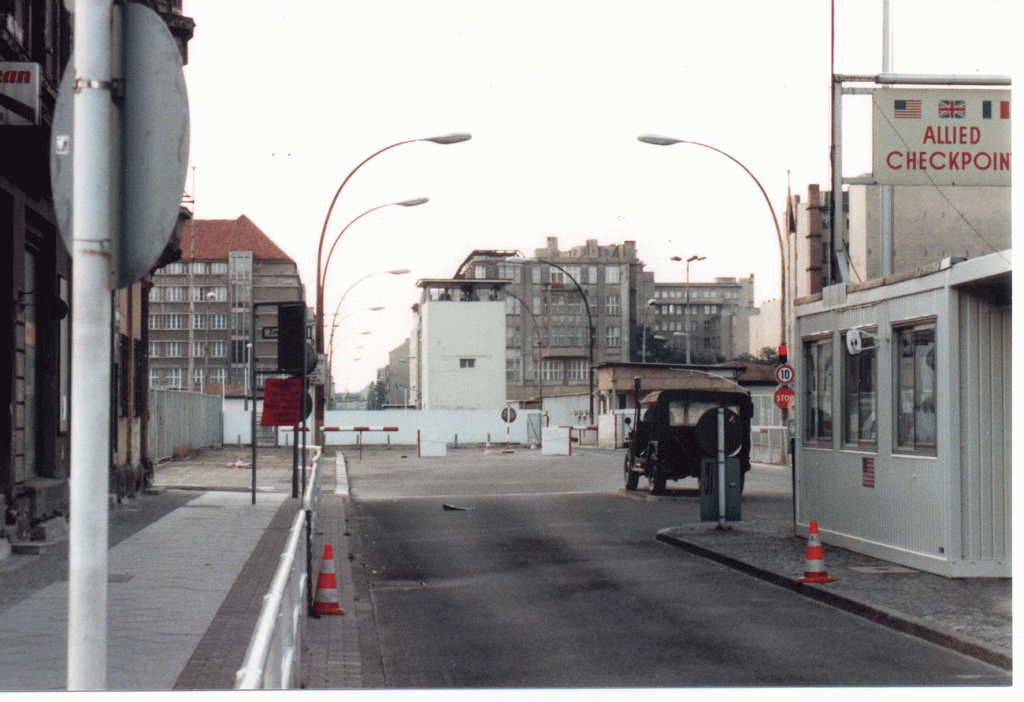
Aside from the Sea Cadets, I still had to hold down a day job. I left school aged 15, and for the first two months I worked at Chessington Zoo (now Chessington World of Adventure). Then in September I started an apprenticeship at an engineering company called Siebe Gorman’s in Chessington. They made diving equipment and breathing apparatus that was used around the world.
I did a year in each major department ending up in the drawing/design office. When I completed my apprenticeship at 21, I left and joined a company called Brown and Root (now KBR) who were in Raynes Park SW London. They designed and built offshore platforms for the oil and gas industry. I worked my way through various positions ending as one of the Chief Design Engineers. My wife Lorraine worked there and that’s where we first met.
I worked for them for 44½ years travelling to various countries, including Oslo and Stavanger in Norway, Paris, Perth in Australia, Jakarta and South Korea. During this time, I was also part of a group of 3 that set up the company’s training program for apprentices and have been assessing trainees and apprentices as part of my work for the past 20 years.
Although I retired from full time work in 2018, I am still assessing, on a part-time basis, trainees and apprentices in engineering for their vocational qualification in design and draughting and project controls and this is being carried out through 2 training centres who specialise in these subjects.
In May last year I was first made aware of my nomination for a British Citizens award in recognition of the 52 years that I have been volunteering within the Sea Cadet Corps which came as a big surprise as I didn’t expect anything like that for doing something that I enjoy. Unfortunately, I wasn’t able to say anything to anyone before the official press release in January this year, when it was announced, which wasn’t easy!
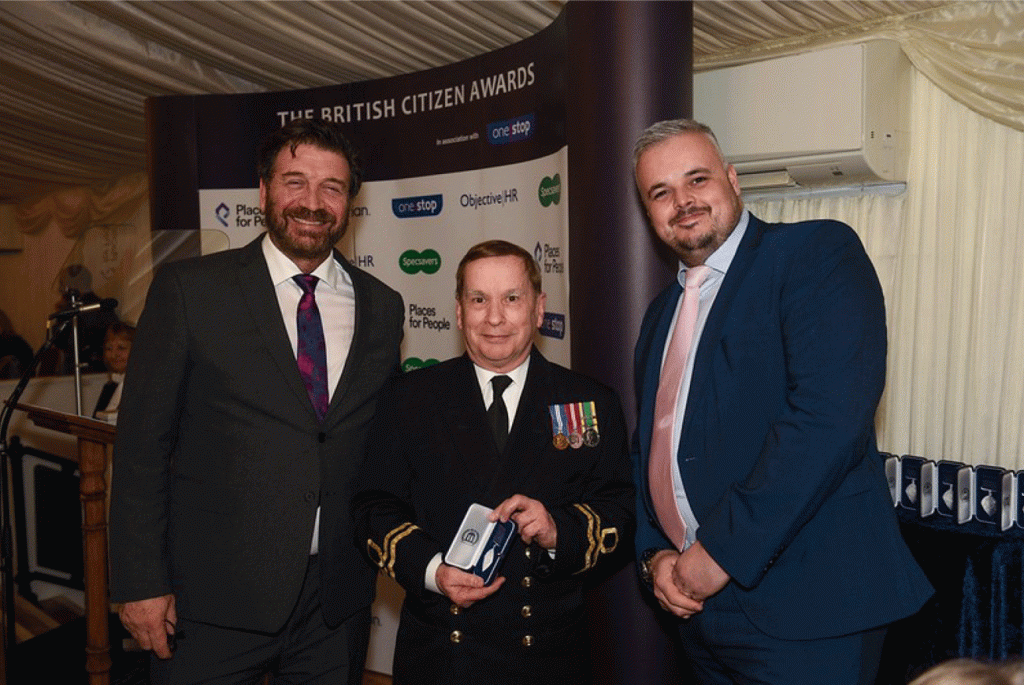
The medal was presented on the 26th January at the House of Lords where we had afternoon tea. There were 29 people receiving the award, drawn from various groups and charities from around the country that inspire and help others. Once this had been completed, we were taken on open top buses for an hour’s tour around London. We then arrived at Church House, behind Westminster Abbey, for the certificate presentation.
The award allows me to use the Letters BCAv after my name including in my Sea Cadet title, which will take a bit of getting used to.
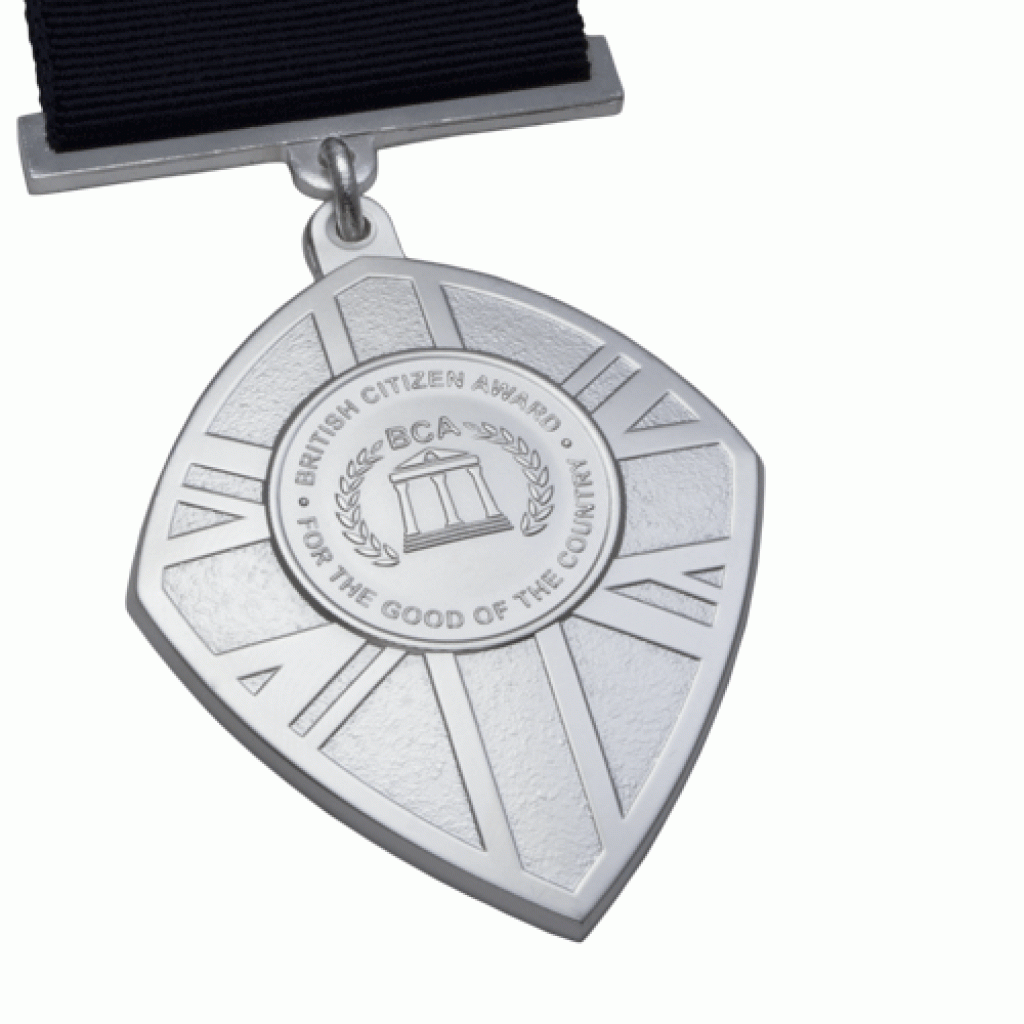
I am hoping to become an ambassador for the award as it is a worthy recognition of people who carry out services and volunteering without a thought for themselves.
Over the past 52 years I have been witness to many occasions where cadets have done something positive and fulfilled their goals that makes the volunteering all worthwhile. Unfortunately, the press nowadays are more concerned about bad things youngsters do rather than the good things, of which there are many. For example, over 200 cadets parade every year in Trafalgar Square, London to commemorate the Battle of Trafalgar, but no one hears about that.
The skills that I learnt as a Sea Cadet set me up for life and I wouldn’t be where I am today without that. Teaching and helping youngsters brings pride and joy especially when you see them achieving the things they would never imagine they could do.
For information about the Sea Cadets visit: www.sea-cadets.org

